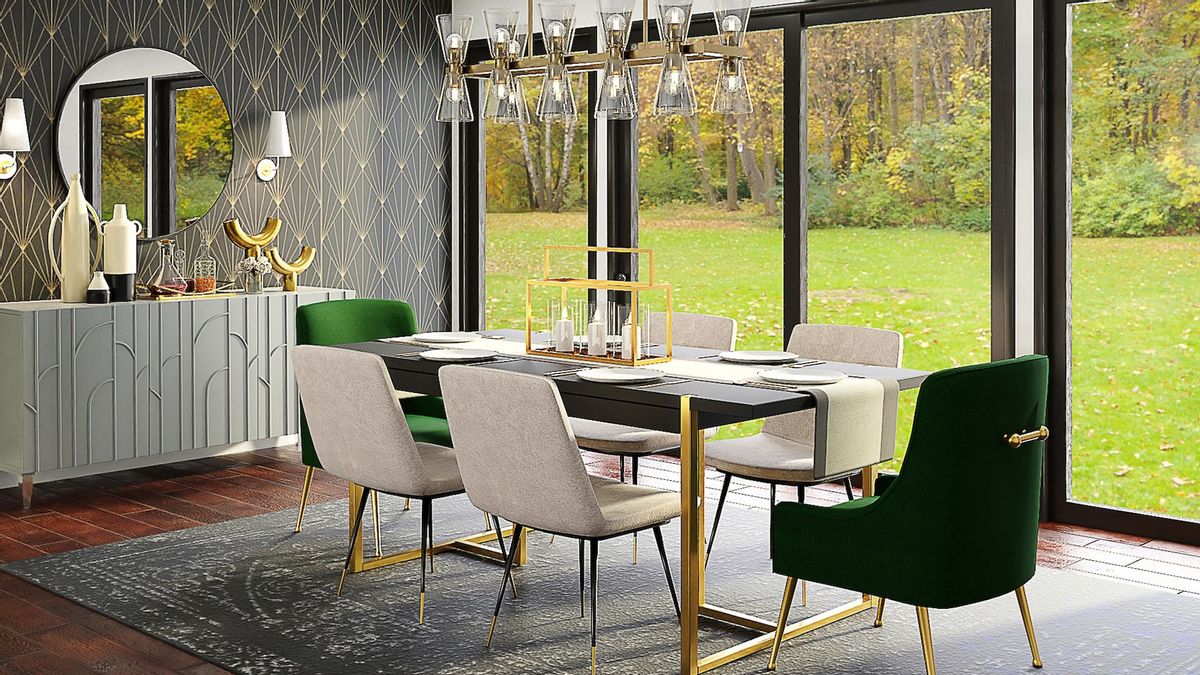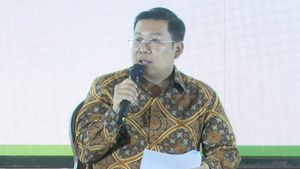JAKARTA - The Ministry of Industry (Kemenperin) is focused on supporting the domestic furniture industry to continue to improve its performance and competitiveness. The Ministry of Industry also supports the Indonesian Wattice and Crafts Industry Association (HIMKI) which targets furniture industry exports to reach 5 billion US dollars by 2024.
In 2020, the export of the furniture industry was recorded at 1.9 billion US dollars and in 2021 it increased 33 percent or reached a value of 2.5 billion US dollars. In the January-September 2022 period, export figures were able to reach 1.9 billion US dollars or higher than the same period in 2021, which was 1.8 billion US dollars.
"Industrial players gathered in HIMKI are targeting exports to reach 5 billion US dollars. To meet this target, the government continues to provide serious support to the furniture industry," said Director General (Dirjen) of Agro Industry at the Ministry of Industry, Putu Juli Ardika, in Jakarta, quoted Saturday, November 12.
In the third quarter of 2022, the agro-industrial sector's contribution to the non-oil and gas processing industry reached 50.5 percent, including the furniture industry with a contribution of 1.3 percent, as well as the wood industry, wood goods, and rattan at 2.4 percent.
However, the furniture industry has not escaped various issues and challenges, one of which is the COVID-19 pandemic which has an impact on the delivery of furniture exports. In addition, there is an increase in inflation in export destination countries resulting in the cancellation and postponement of orders, especially from European countries and the United States.
In fact, the United States is the main destination for export products with an export contribution of more than 50 percent. Meanwhile, exports of the goals of European countries contributed a total of at least 19 percent of total exports of furniture products.
"The government does not remain silent in facing the challenges for the furniture industry. The breakthrough made by the Ministry of Industry is through efforts to increase the intelligence market and promote products to non-traditional markets, for example India and the Middle East," said Putu.
In order to improve the performance of the national furniture industry, the Ministry of Industry has also encouraged increased absorption in the domestic market, namely through intensification of efforts to increase the Use of Domestic Products (P3DN).
In 2022, the Ministry of Industry will prepare a free Domestic Content Level (TKDN) certification program for 1,250 products. Furthermore, in 2023, the Ministry of Industry will also fight for additional budget so that the number of free TKDN certificates will increase to 10 thousand products.
"This step is expected to be a momentum for the furniture industry to improve the performance and absorption of its domestic products," said Putu.
Putu said, in an effort to improve the performance of the furniture industry, the Ministry of Industry also continues to improve on improving supply chains, import substitution, and capacity building programs.
"All efforts, we intensify as a form of government alignment so that the domestic industry can be sovereign, advanced, and competitive," he said.
Meanwhile, in order to ensure the availability and stability of raw materials supply, the Ministry of Industry will also fight for wood and rattan commodities to be immediately included in the National Commodity Balance System (SINAS NK) which contains data related to the supply or production of certain commodities, industrial raw needs, and consumption within a certain period of time that is valid nationally.
"This system allows strict and comprehensive supervision of the supply chain of industrial raw materials, including import needs," said Putu.
On the same occasion, the Chairperson of the Presidium of HIMKI, Abdul Sobur said, with the optimal support from the government, industry players are optimistic that the national furniture industry will be able to have a good performance in the future so that it can capture various market opportunities.
"We can also see that global market opportunities are increasingly open and continue to grow driven by the rampant development of hotels, as well as new commercial and office areas. Opportunities also come from the development of smart cities, including real estate development which is projected to create considerable demand for furniture products and national handicrafts," he added.
The English, Chinese, Japanese, Arabic, and French versions are automatically generated by the AI. So there may still be inaccuracies in translating, please always see Indonesian as our main language. (system supported by DigitalSiber.id)













